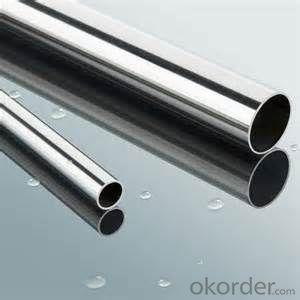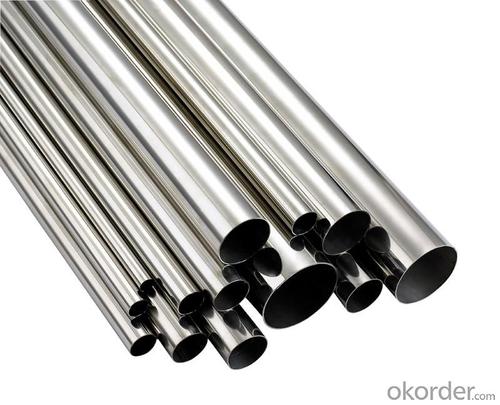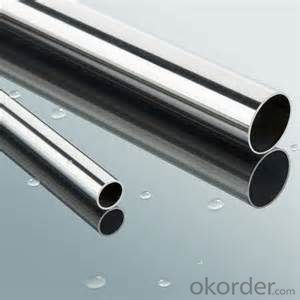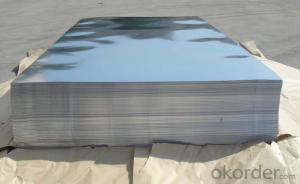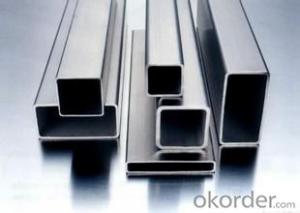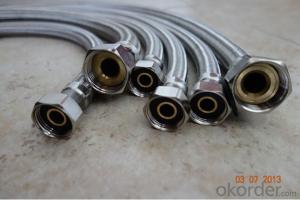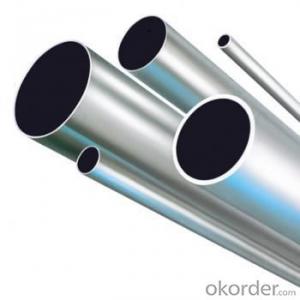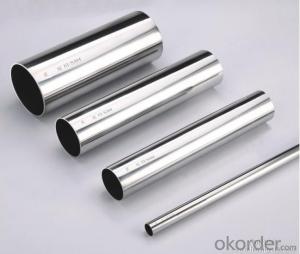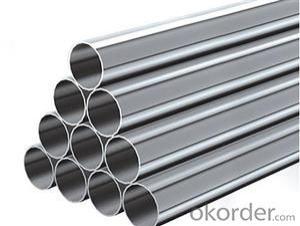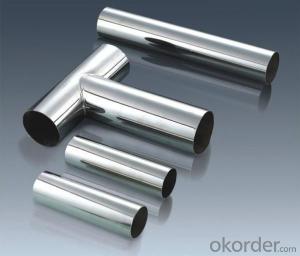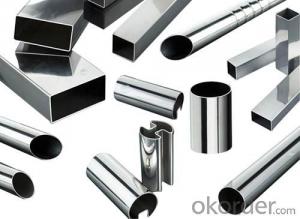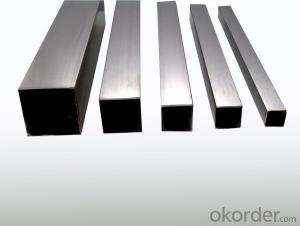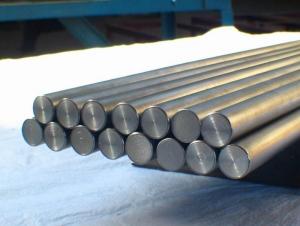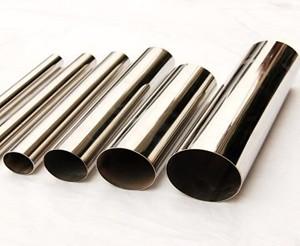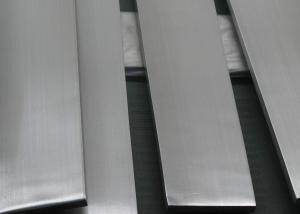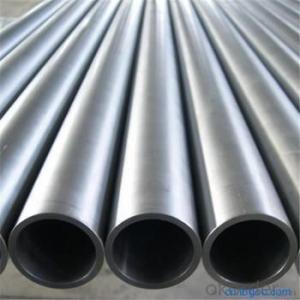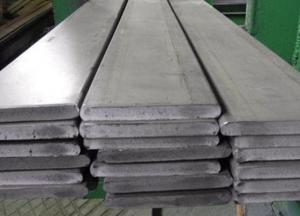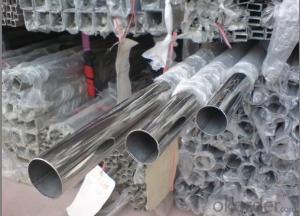STAINLESS STEEL PIPES 304L pipe
- Loading Port:
- China Main Port
- Payment Terms:
- TT OR LC
- Min Order Qty:
- -
- Supply Capability:
- -
OKorder Service Pledge
OKorder Financial Service
You Might Also Like
Description:
Stainless Steel Pipe
Material:
304 321 316 310
Packing:
In bundle
MOQ:
5 TONS
Comparison of standardized steels
| EN-standard Steel no. k.h.s DIN | EN-standard Steel name | SAE grade | UNS |
|---|---|---|---|
| 1.4109 | X65CrMo14 | 440A | S44002 |
| 1.4112 | X90CrMoV18 | 440B | S44003 |
| 1.4125 | X105CrMo17 | 440C | S44004 |
| | | 440F | S44020 |
| 1.4016 | X6Cr17 | 430 | S43000 |
| 1.4408 | G-X 6 CrNiMo 18-10 | 316 | |
| 1.4512 | X6CrTi12 | 409 | S40900 |
| | | 410 | S41000 |
| 1.4310 | X10CrNi18-8 | 301 | S30100 |
| 1.4318 | X2CrNiN18-7 | 301LN | |
| 1.4307 | X2CrNi18-9 | 304L | S30403 |
| 1.4306 | X2CrNi19-11 | 304L | S30403 |
| 1.4311 | X2CrNiN18-10 | 304LN | S30453 |
| 1.4301 | X5CrNi18-10 | 304 | S30400 |
| 1.4948 | X6CrNi18-11 | 304H | S30409 |
| 1.4303 | X5CrNi18-12 | 305 | S30500 |
| | X5CrNi30-9 | 312 | |
| 1.4541 | X6CrNiTi18-10 | 321 | S32100 |
| 1.4878 | X12CrNiTi18-9 | 321H | S32109 |
| 1.4404 | X2CrNiMo17-12-2 | 316L | S31603 |
| 1.4401 | X5CrNiMo17-12-2 | 316 | S31600 |
| 1.4406 | X2CrNiMoN17-12-2 | 316LN | S31653 |
| 1.4432 | X2CrNiMo17-12-3 | 316L | S31603 |
| 1.4435 | X2CrNiMo18-14-3 | 316L | S31603 |
| 1.4436 | X3CrNiMo17-13-3 | 316 | S31600 |
| 1.4571 | X6CrNiMoTi17-12-2 | 316Ti | S31635 |
| 1.4429 | X2CrNiMoN17-13-3 | 316LN | S31653 |
| 1.4438 | X2CrNiMo18-15-4 | 317L | S31703 |
| 1.4362 | X2CrNi23-4 | 2304 | S32304 |
| 1.4462 | X2CrNiMoN22-5-3 | 2205 | S31803/S32205 |
| 1.4539 | X1NiCrMoCu25-20-5 | 904L | N08904 |
| 1.4529 | X1NiCrMoCuN25-20-7 | | N08926 |
| 1.4547 | X1CrNiMoCuN20-18-7 | 254SMO | S31254 |
Stainless steel’s resistance to corrosion and staining, low maintenance and familiar lustre make it an ideal material for many applications. There are over 150 grades of stainless steel, of which fifteen are most commonly used. The alloy is milled into coils, sheets, plates, bars, wire, and tubing to be used in cookware, cutlery, household hardware, surgical instruments, major appliances, industrial equipment (for example, in sugar refineries) and as an automotive and aerospace structural alloy and construction material in large buildings. Storage tanks and tankers used to transport orange juice and other food are often made of stainless steel, because of its corrosion resistance. This also influences its use in commercial kitchens and food processing plants, as it can be steam-cleaned and sterilized and does not need paint or other surface finishes.
Stainless steel is used for jewelry and watches with 316L being the type commonly used for such applications. It can be re-finished by any jeweler and will not oxidize or turn black.
Some firearms incorporate stainless steel components as an alternative to blued or parkerized steel. Some handgun models, such as the Smith & Wesson Model 60 and the Colt M1911 pistol, can be made entirely from stainless steel. This gives a high-luster finish similar in appearance to nickel plating. Unlike plating, the finish is not subject to flaking, peeling, wear-off from rubbing (as when repeatedly removed from a holster), or rust when scratched.
- Q: Can stainless steel pipes be used for seawater applications?
- Yes, stainless steel pipes can be used for seawater applications. Stainless steel is highly resistant to corrosion and can withstand the corrosive effects of seawater, making it an ideal choice for applications in marine environments.
- Q: What are the different types of stainless steel pipe elbows?
- Stainless steel pipe elbows come in various types, each designed to meet specific applications and requirements. Here are some commonly used types: 1. The 90-degree elbow is the most popular choice for changing pipe direction by 90 degrees. It is available in different sizes and materials to cater to diverse needs. 2. If a sharper change in direction is required, the 45-degree elbow is used to alter the pipe direction at a smaller angle of 45 degrees. 3. The long radius elbow has a larger radius, ensuring a smoother flow of fluids. It is commonly used in critical applications like the oil and gas industry, where flow rate is crucial. 4. In tight spaces where a sharp change in direction is necessary, the short radius elbow with a smaller radius is often employed. 5. When a pipe size reduction is needed, the reducing elbow is used, resulting in a change in the pipe diameter. This type is commonly found in plumbing systems that require connecting different pipe sizes. 6. Welded elbows are created by welding two separate pipe sections, making them strong and durable. They are suitable for high-pressure applications. 7. Threaded elbows have female threads on both ends, allowing easy connection to other threaded pipes or fittings. They are commonly used in plumbing systems and can be disassembled easily if necessary. 8. Flanged elbows feature flanges on both ends, securely bolted together. They are frequently used in applications requiring frequent disassembly or when a high level of strength is needed. These examples represent just a fraction of the stainless steel pipe elbows available in the market. The choice of elbow depends on specific requirements such as pipe size, fluid flow rate, pressure, and temperature. Selecting the appropriate type of elbow is crucial for ensuring efficient and safe operation of the piping system.
- Q: How do you prevent rusting in stainless steel pipes?
- To prevent rusting in stainless steel pipes, there are several measures that can be taken: 1. Regular Cleaning: Regularly clean the stainless steel pipes using mild soap or detergent and warm water. This helps to remove any dirt, debris, or contaminants that can cause corrosion. 2. Avoid Abrasive Cleaners: Avoid using abrasive cleaners, steel wool, or harsh chemicals as they can scratch the surface of the stainless steel and compromise its protective layer. 3. Protect from Chlorides: Stainless steel pipes should be protected from exposure to chlorides, such as those found in saltwater or certain cleaning agents. If the pipes are installed in areas where these substances are present, it is important to apply protective coatings or use specialized stainless steel grades that are resistant to corrosion caused by chlorides. 4. Proper Ventilation: Ensure that the stainless steel pipes are properly ventilated to prevent the buildup of moisture, which can accelerate the rusting process. Adequate airflow helps to keep the pipes dry and reduces the risk of corrosion. 5. Regular Inspections: Regularly inspect the stainless steel pipes for signs of rust or corrosion. If any damage or rust spots are detected, they should be addressed promptly to prevent further deterioration. 6. Passivation: Passivation is a chemical treatment process that helps to enhance the corrosion resistance of stainless steel. It involves removing any contaminants from the surface and promoting the formation of a protective oxide layer. Passivation should be done by professionals who are experienced in handling stainless steel. 7. Cathodic Protection: In some cases, cathodic protection can be used to prevent rusting in stainless steel pipes. This involves using sacrificial anodes or impressed current systems to create an electrochemical reaction that protects the stainless steel from corrosion. By following these preventive measures, you can significantly reduce the risk of rusting in stainless steel pipes and ensure their longevity and durability.
- Q: 304 stainless steel will rust it?
- Stainless steel is a very thin layer formed on the surface and the stability of the fine solid chromium rich oxide film (protective film), to prevent the infiltration of oxygen atoms, to oxidation, and the ability to obtain anti-corrosion. Once there are some reasons, this film was constantly destroyed, air or liquid oxygen atoms will continue to infiltrate or metal atoms of iron to keep out from the loose formation of iron oxide, the metal surface will be continuously corroded.
- Q: Are stainless steel pipes suitable for automotive applications?
- Yes, stainless steel pipes are highly suitable for automotive applications. They are known for their excellent corrosion resistance, high strength, and durability, making them ideal for withstanding the harsh conditions of automotive environments. Additionally, stainless steel pipes offer good heat resistance, which is crucial in automotive exhaust systems. They are widely used in various automotive components such as exhaust systems, fuel lines, brake lines, and cooling systems.
- Q: Can stainless steel pipes be used for underground irrigation systems?
- Underground irrigation systems can indeed utilize stainless steel pipes. This material, known for its durability and resistance to corrosion, proves apt for instances where the pipes come into contact with moisture and soil conditions. Due to its ability to withstand high pressure and temperature variations, stainless steel stands as a favored option for underground irrigation systems. Furthermore, its extended lifespan surpasses that of alternative materials, thereby diminishing the necessity for frequent repairs or replacements. Nevertheless, it remains crucial to guarantee proper installation and insulation of the pipes to avert potential damage caused by soil movement or external factors.
- Q: Can stainless steel pipes be used for architectural sculptures?
- Certainly, architectural sculptures can utilize stainless steel pipes. Stainless steel, being a versatile material, provides durability, corrosion resistance, and an elegant appearance. These attributes make it a favored option for sculpting and constructing architectural elements. By manipulating stainless steel pipes, artists and architects can manifest their imaginative concepts in diverse forms and dimensions. Furthermore, the ability of stainless steel to endure extreme weather conditions and its minimal upkeep needs render it appropriate for outdoor installations. In conclusion, when it comes to architectural sculptures, stainless steel pipes present a dependable and aesthetically pleasing choice.
- Q: How are stainless steel pipes insulated?
- To ensure thermal efficiency and prevent heat loss or condensation, stainless steel pipes are commonly insulated using a variety of methods. One method involves wrapping insulation materials like mineral wool or fiberglass around the pipes and securing them with a metal jacket. This insulation material helps reduce heat transfer and maintains the desired temperature of the fluid inside the pipe. Another option is to apply foam insulation directly to the pipe's surface and then cover it with a protective layer like a PVC jacket. This type of insulation forms a seamless and moisture-resistant barrier, effectively preventing any heat loss or condensation. In some cases, stainless steel pipes are insulated through a process known as "cladding." This involves applying a layer of insulating material, such as aluminum or stainless steel, to the exterior surface of the pipe. Cladding provides additional protection against external elements and helps maintain the desired temperature within the pipe. Insulating stainless steel pipes is crucial in various industries where temperature control is vital, such as oil and gas, chemical processing, or HVAC systems. The choice of insulation method depends on factors like the specific application, desired temperature range, and environmental conditions surrounding the pipe.
- Q: What kind of welding machine is used for welding thin stainless steel plate and stainless steel square tube?
- But I've already attached a ban on reverse welding (the reverse side is a square tube frame)3. I want it to look good after welding.I was just 4. when reading practice a week of welding, can actually be said to have no understanding of welding after graduation, occasionally with ordinary welding iron will often appear in the weld the warning signs, the other is capable person, not a child, he should be responsible for his behavior. Irrigation can not go fishing? We must also be jointly and severally liable for an accident
- Q: How do stainless steel pipes compare to PEX pipes?
- Stainless steel pipes and PEX pipes have different characteristics and applications, which make them suitable for different plumbing systems. Stainless steel pipes are known for their durability and strength. They are highly resistant to corrosion, which makes them ideal for use in water supply systems, especially in areas with aggressive water conditions. Stainless steel pipes can withstand high pressure and temperature, making them suitable for both residential and commercial applications. They are also fire-resistant, which adds to their safety profile. Additionally, stainless steel pipes have a long lifespan and require minimal maintenance, making them a cost-effective option in the long run. On the other hand, PEX pipes are made of cross-linked polyethylene, which offers flexibility and ease of installation. PEX pipes are highly resistant to freezing and bursting, making them suitable for cold-climate regions. They have the ability to expand and contract, which reduces the risk of leaks or bursts due to temperature changes. PEX pipes are also corrosion-resistant, eliminating the need for expensive and time-consuming maintenance. Additionally, PEX pipes are quieter compared to metal pipes, as they dampen noise and vibration. When choosing between stainless steel pipes and PEX pipes, it is essential to consider factors such as the specific plumbing requirements, budget, and local building codes. While stainless steel pipes excel in durability and strength, PEX pipes offer flexibility and ease of installation. Ultimately, the choice between the two will depend on the specific needs of the plumbing system and the preferences of the homeowner or plumbing professional.
Send your message to us
STAINLESS STEEL PIPES 304L pipe
- Loading Port:
- China Main Port
- Payment Terms:
- TT OR LC
- Min Order Qty:
- -
- Supply Capability:
- -
OKorder Service Pledge
OKorder Financial Service
Similar products
Hot products
Hot Searches
Related keywords

